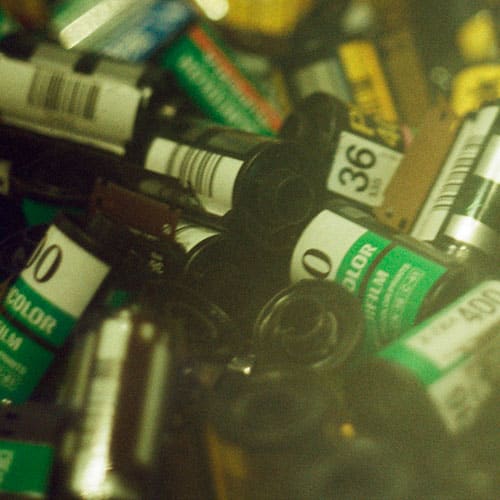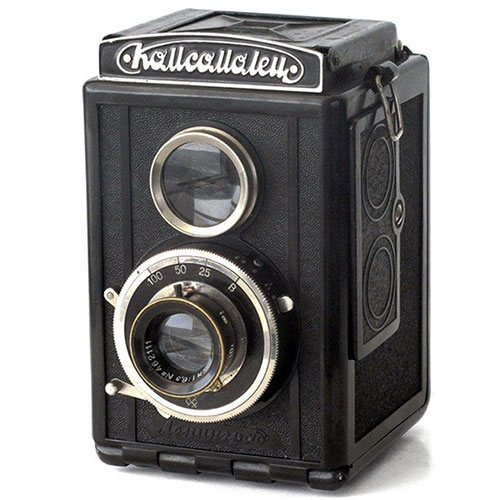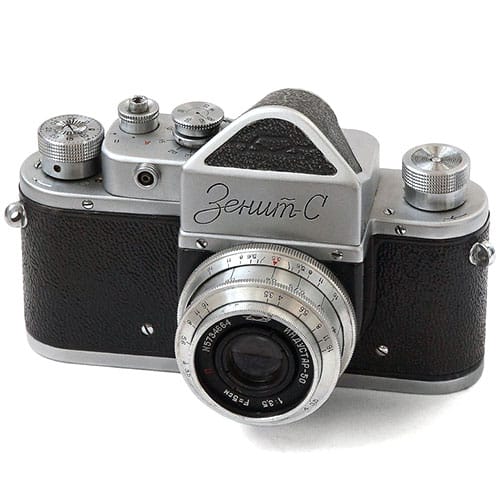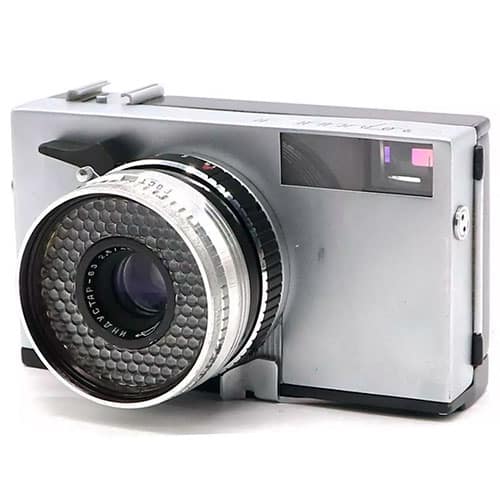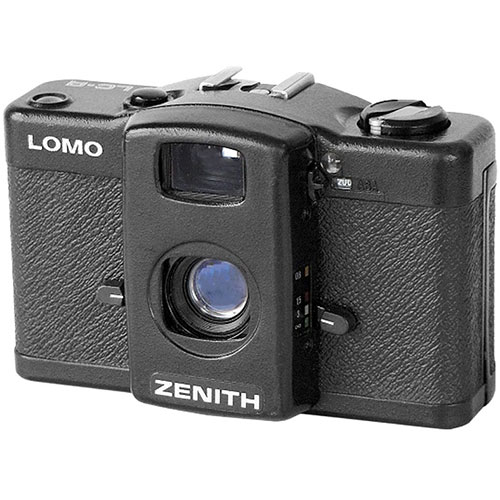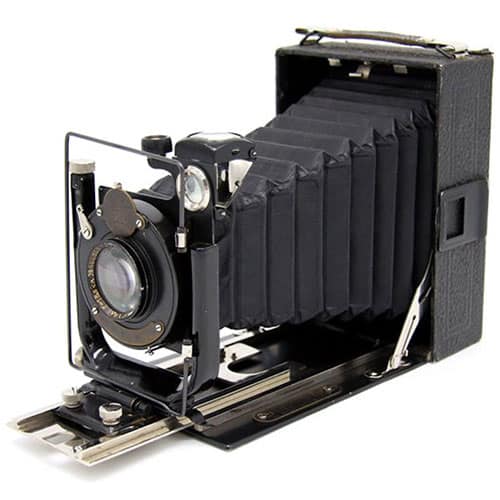EFTE
EFTE camera is the first Soviet mass-produced large-format folding plate camera, which was later named EFTE-1.

Moscow, 1929 – the start of production of the first Soviet serial folding large-format plate-type camera “EFTE-1” (ЭФТЭ-1), manufactured by the “Foto-Trud” artel. It had a format of 9×12 cm. and a single extension of the bellows.
EFTE Specifications
- Type: 9×12 folding camera
- Manufacturer: Foto-Trud
- Production period: from 1929 to 1938
- Format: 9×12
- Lens mount: fixed lens
- Lens: Periscope f12/150
- Shutter: leaf shutter with speeds of 1/25, 1/50 and 1/100 sec. plus B and T
- Viewfinder: ground glass
- Lighmeter: none
- Flash synchronisation: none
- Selftimer: none
- Weight: 1140 grams
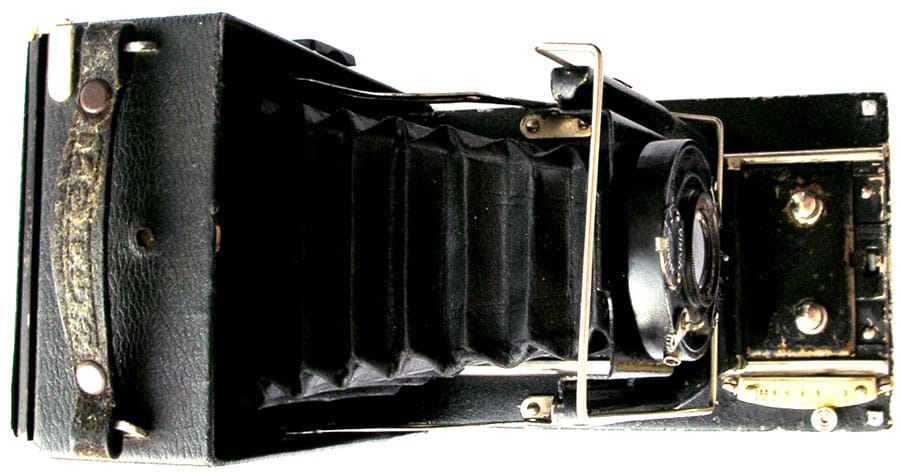
As you can see, the EFTE camera was very similar in appearance to many German cameras of those years, and at the end of the article, we will pay special attention to this topic.
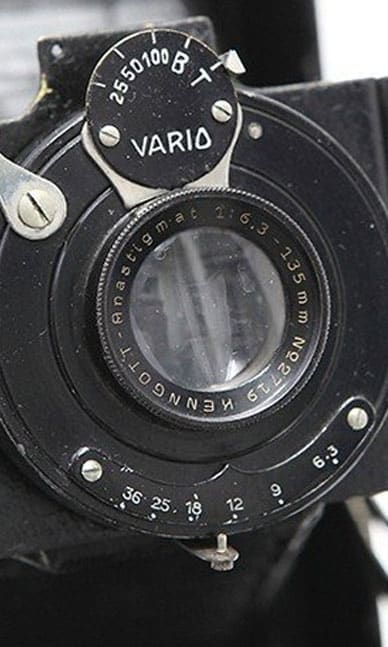
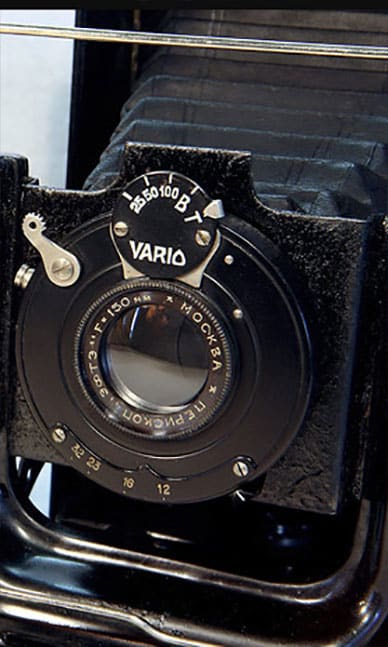
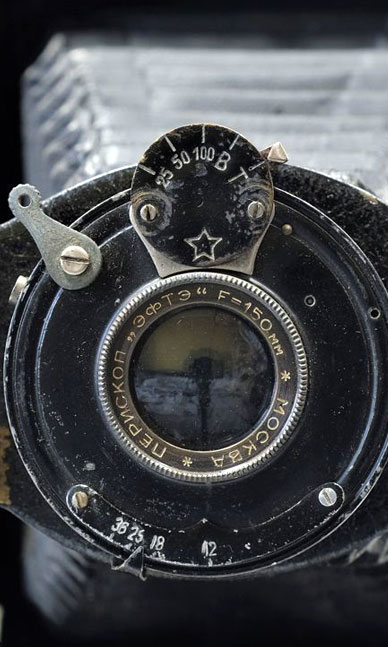
The camera body is made of a stamped metal, covered with a fabrikoid (artificial leather). The front board did not have vertical and horizontal displacements. In the cassette part of the body, there was a sliding frame with ground glass or a standard cassette. The first 25 cameras were released by the end of 1929. They were equipped with German lenses (Kenngott anastigmat 1: 6.3, 13.5 cm) and a VARIO shutter with shutter speeds of 1/25, 1/50, 1/100 sec, “B” and “T” (which helped to focus using a frosted glass).
Focusing also was carried out by the distance scale located to the right of the lens using the drive knob.
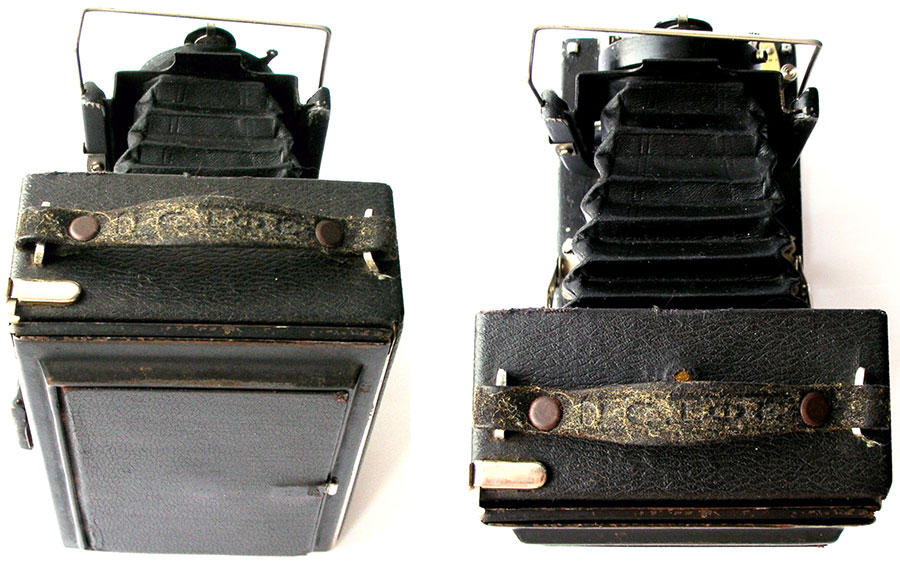
The camera was equipped with a folding frame viewfinder. Further, the EFTE 1 camera was equipped with the Soviet lens called Periscope.
Unlike more expensive large format cameras, this model did not have any displacements of the front and rear planes. By removing these functions from the camera, Soviet engineers significantly reduced the cost of the device, which of course was one of the most important goals of a socialist country.
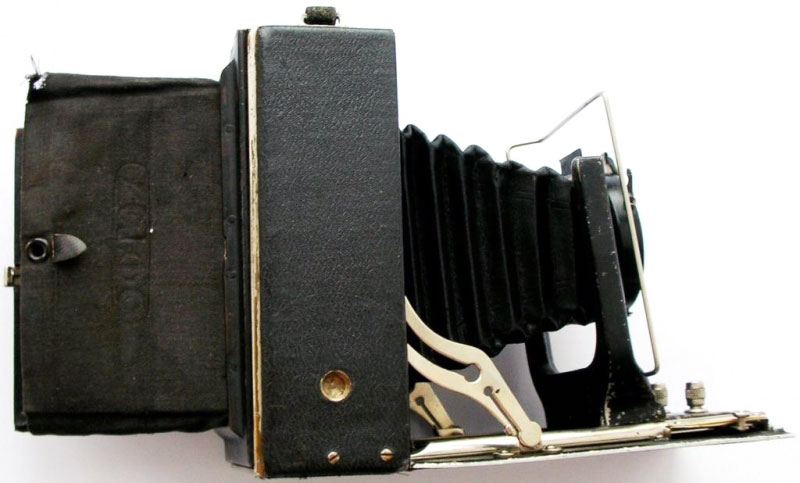
By about 1933, the EFTE artel had grown enormously and turned into a large photo complex, which, in addition to cameras, produced a whole series of photographic products. For the purpose of better organization and the possibility of further successful growth, the artel was divided into two parts by separating camera equipment into an independent ARFO artel, and all devices of subsequent releases are also called ARFO.
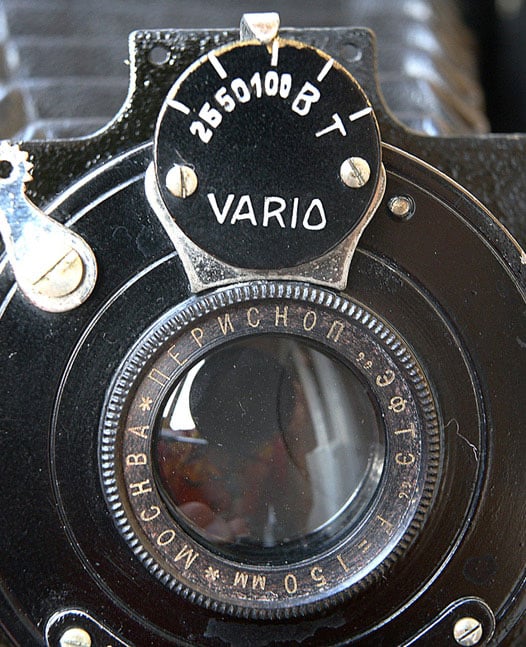
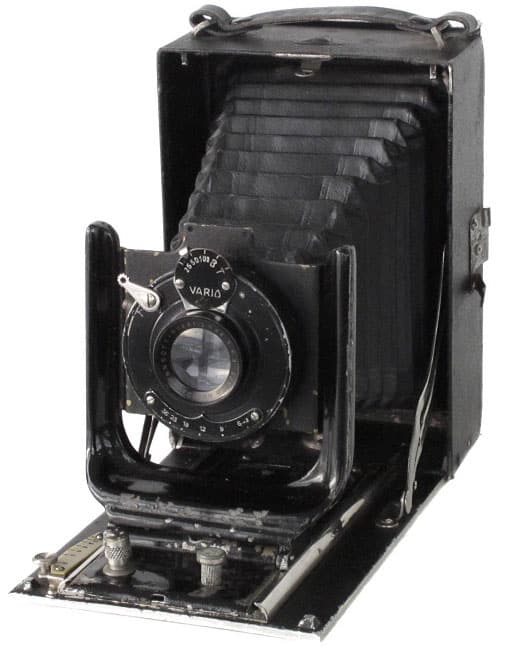
Now it’s quite difficult to buy EFTE 1 cameras in a good condition because they were produced in small quantities and were not of very good quality.
But nevertheless, this camera is of some collectible value, in view of the fact that the EFTE camera was, in fact, the first Soviet camera produced in mass circulation.
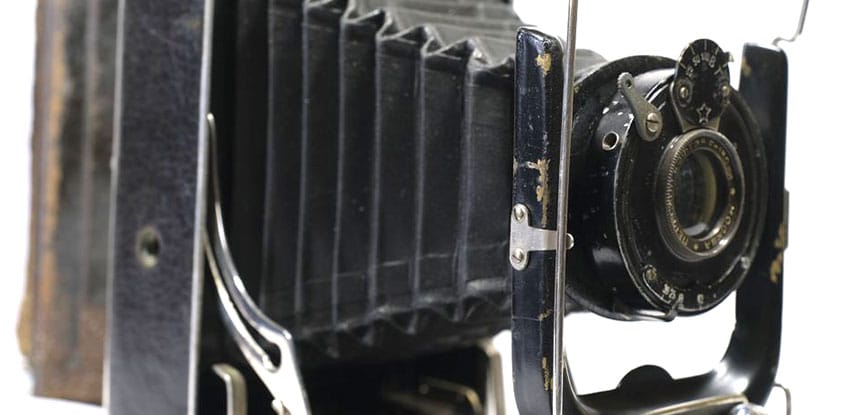
In fact, the principle of creating Soviet cameras and the work of the Soviet industry as a whole is clearly visible in this camera. Due to the fact that the intelligentsia was destroyed in 1917, and science was in decline due to the actions of the Soviet authorities, the creation of any cameras from scratch was completely impossible.
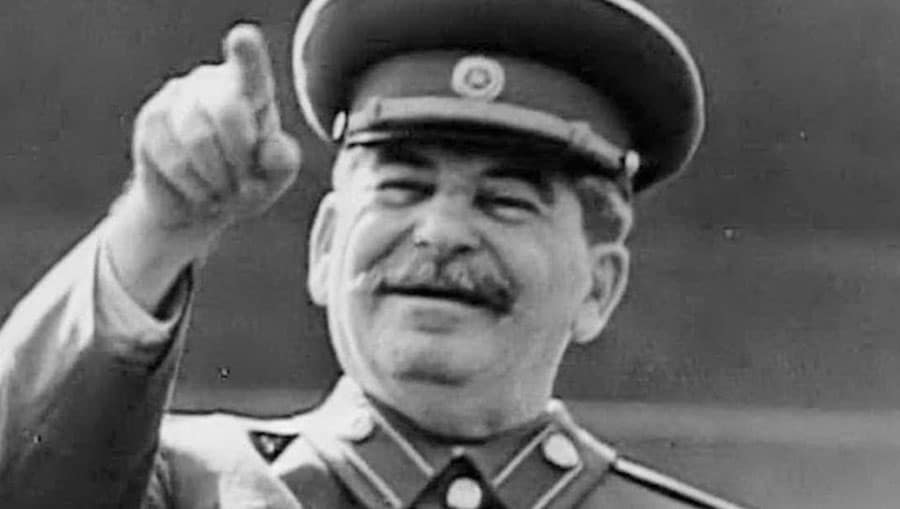
But the Soviet Union nevertheless had a task of creating its own cameras, both for propaganda purposes and in order to at least create the appearance of the presence of the photographic industry in the USSR. But as mentioned above, almost all scientists were shot, and science was destroyed. And to create their own camera, Soviet engineers had to copy the development of other countries. This is how not only the Soviet EFTE 1 camera was created, but also most of the other Soviet cameras.


